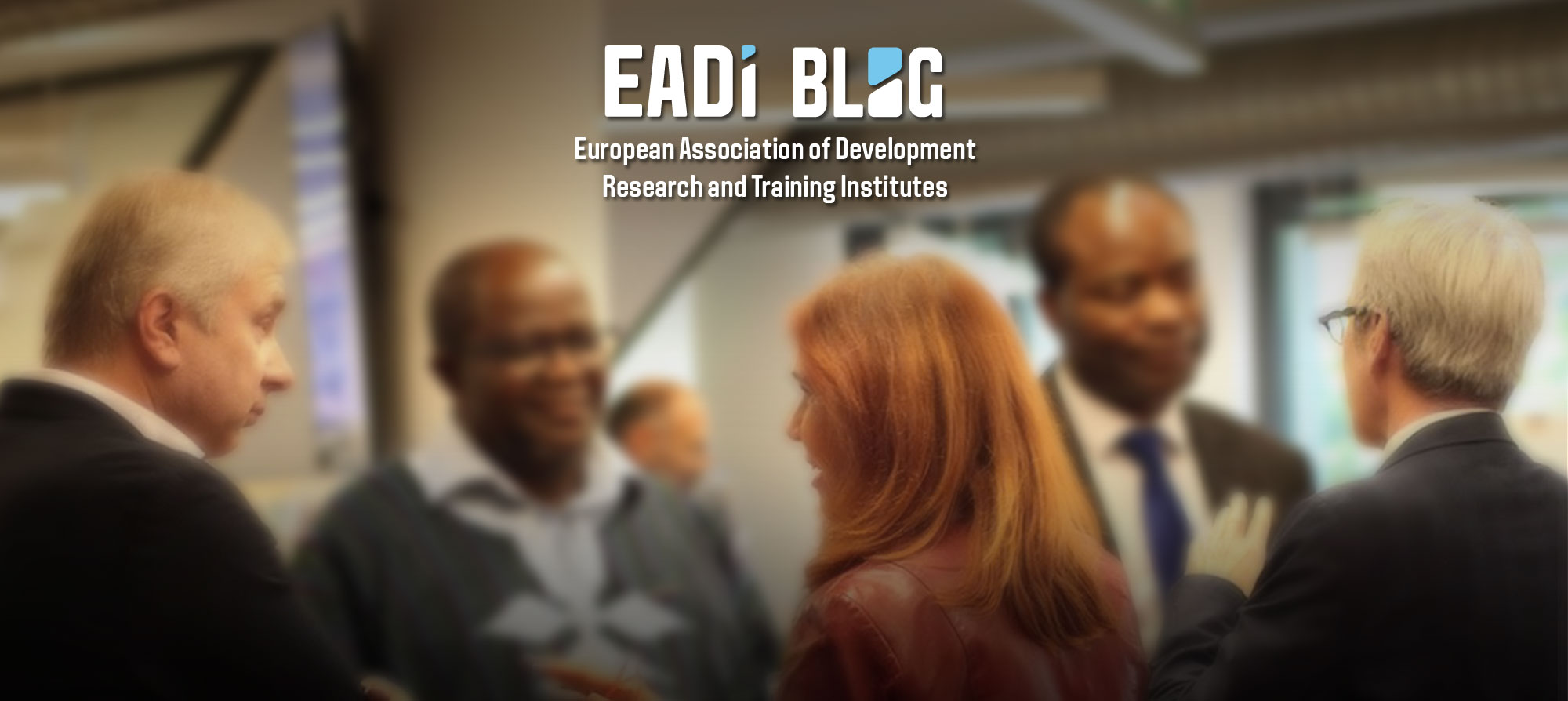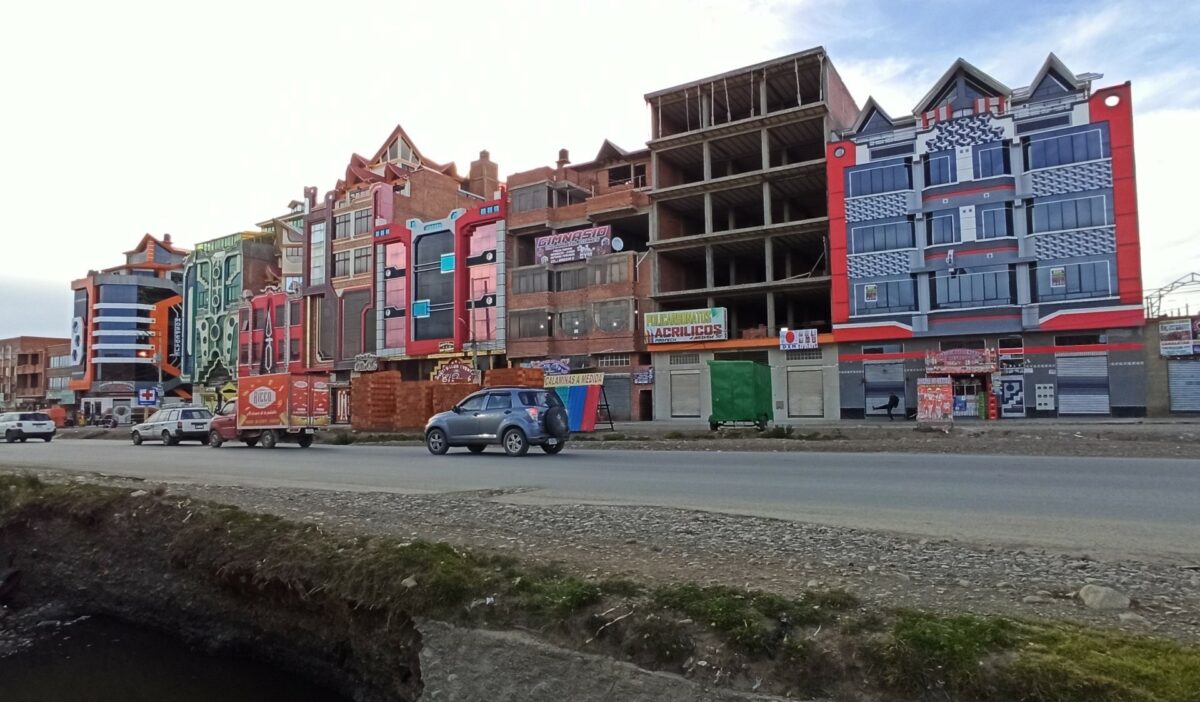By Guido Alejo, translated from Spanish by Maria Fernanda Córdova Suxo
Within Bolivia, a country marked by high levels of economic informality – nearly 90% of its active workforce, according to the Centro Boliviano de Economía (CEBEC) – El Alto stands out. Perched at an elevation of 4,000 meters on the Altiplano plateau, this city embodies informality not only in its economy but also in its very inception, formed outside the realms of state planning. Being just 38 years old, El Alto is witnessing a profound evolution in its concept of modernity. Here, a dynamic interplay between economic advancement, social mobility, and the redefinition of urban identity is underway.
This transformation is driven significantly by the indigenous Aymara population, resiliently surmounting poverty and forging independent cultural expressions. Their narratives diverge from the mainstream Bolivian academia and professional institutions, often distanced from the lived realities of this vibrant community. Delving into El Alto’s distinct social and cultural landscape, this article sheds light on its quest for progress, showcasing the intriguing interplay between heritage and modernity.
A Popular Perspective of Modernity
In El Alto, modernity remains a constant theme in social organizations, intertwined with political discourses like ‘decolonisation’ and ‘Suma Qamaña’ (Aymara for Living Well) a state ideological position that is presented as an alternative to Western capitalism. For the people here, modernity means infrastructure and is viewed as a phase following the attainment of essential human rights, including the coverage of basic services.
For the youth of El Alto, modernity is associated with high technology and the industrial revolution 3.0. It is not surprising that several self-taught young people regularly exhibit handmade robotic creations. This is not only restricted to the urban area of El Alto, but also extends to the Aymara in the wider Altiplano, where everything from hydraulic arms to mechanical potato harvesters and robotic tractor farmers is constantly on display.
Crafting these robotics amidst profound precariousness, social vulnerability, poverty, and numerous other deficiencies, adds even more weight to this outstanding achievement. However, governmental entities across various levels have yet to develop supportive policies to harness this potential. Despite El Alto’s rich human capital, there’s a lack of institutional backing for it to emerge as a Scientific Hub.
Another thriving social group is the flourishing upper-middle class of indigenous roots, known as qamiri in the Aymara language. This cohort stands as a cultural vanguard within the city, showcasing artistic, celebratory, and architectural expressions. What sets this group apart from other Bolivian elites is its steadfast connection to indigenous heritage. In navigating informality, this population group has uniquely redefined modernity, crafting an autonomous cultural narrative.
A form of Andean architecture, commonly known as Cholet, stands as a primary expression of this societal group, embodying the culmination of their economic and social endeavors. It not only transcends the established norms endorsed by the state and academia but also serves as an adaptation of material, technological, and aesthetic resources to meet contemporary needs rooted in Aymara cultural heritage. Instead of merely blending tradition and modernity, it selectively incorporates modern elements to preserve its significance and relevance within the Aymara heritage.
These actors—social organizations, innovative youth, and the qamiri elite—share a common thread: the adaptation of modernity through diverse societal lenses. While it bears both positives and negatives, like the widening social inequality gaps, it embodies a form of self-modernization that persists despite the state’s lack of support.
City Visions: El Alto’s ‘Tiwanaku of the 21st Century’
Within El Alto’s political activism circles, diverse monikers have emerged for the city, namely ‘Tupac Katari City’ or ‘Aymara Capital.’ Among these, ‘Tiwanaku of the 21st Century’ stands out, hinting at a continuum with a civilisation that profoundly shaped the pre-Hispanic Andean era. The Tiwanaku civilisation, which thrived in the first millennium A.D. was a Pre-Columbian society that flourished across today’s Bolivia and parts of Peru in the Andean region. It brought technological achievements which enhanced the quality of life and wielded cultural and political influence on surrounding regions without using force.
Despite stark disparities between El Alto and Tiwanaku, it’s an intriguing comparison. The discourse around an independent modernity doesn’t mimic Western standards but looks at Tiwanaku and its virtues as potentially adaptable to the contemporary world.
Internalised Elements in Urban Life
As the city’s visions take shape, so do its social values. Education emerges as a central pillar in the Alteño and broader indigenous imaginations. Formerly, leadership in Aymara regions was granted based on the wisdom of community members, with the later inclusion of literate young people due to their skills and capabilities. Today, however, the pursuit of a profession is valued for holding a communal leading role.
Issues such a city planning are done with a domestic focus, embodied for example in the creation of ‘popular utilitarian housing.’ These homes not only accommodate daily needs but also anticipate family growth and evolving necessities.
A vivid spirit of entrepreneurship, from burgeoning local chambers to small-scale informal endeavors, manifests diversely. The qamiri elite label themselves ‘entrepreneurs,’ leveraging commercial skills for economic growth and sustainability.
Historically, a culture of resilience, rooted in collective support and kinship ties, has buoyed the city through various crises, including political, economic, and the recent Covid pandemic. Entrepreneurial approaches and forward-thinking are now ingrained in the city’s identity, fostering a reduction of extreme poverty rates in contexts of informality.
Modernity through an Indigenous Lens
The diverse connotations of modernity evoke different reactions, ranging from rejection, as argued by Bolivian indigenous intellectuals, to the affirmation of Western modernity by some professional sectors. The state promotes its perspective of modernity through visually striking infrastructures made of glass and concrete, often overlooking the population’s quality of life.
In El Alto, alternative perspectives on modernity unfold outside state narratives. These viewpoints don’t necessarily sever ties with ancestral Aymara roots but rather reflect historical frustrations and evolving aspirations within the contemporary landscape. This dynamic interplay underscores a unique indigenous-inspired approach to modernity, shaped by historical context and evolving societal expectations.
Guido Alejo is architect and social analyst: https://guidoalejo.wordpress.com
Maria Fernanda Córdova Suxo is a Ph.D. candidate and lecturer in Sociology at the University of Kassel.
Image: by the authors
This article is part of the collaborative research work of her doctoral thesis “The Narrative Construction of Indigeneities within the Framework of Development. The Case of Social Movements in the Bolivian Highlands”. It gives the views of the authors, not the position of the EADI Debating Development Blog or the European Association of Development Research and Training Institutes.


Very interesting. Perhaps it is useful to mention the existence of another recent text on El Alto: the homonymous chapter in Martín Caparrós’ “Ñamérica” (2021). His findings about ‘indigenous modernity’ are more or less similar to the above text, but he also discusses in detail the negative features of El Alto: the city is one of the most violent ones in Bolivia and (sexual) exploitation of women is ubiquitous.
Thanks for mentioning the reference! Indeed, the literature has been growing and expanding in the last ten years, capturing international attention regarding the Andean region. With our contribution we try to make visible the voice and perspective of the Alteños themselves in their perceptions of modernity and development. Another more recent work in this regard is “Los caminos de la economía popular” edited by Nico Tassi.